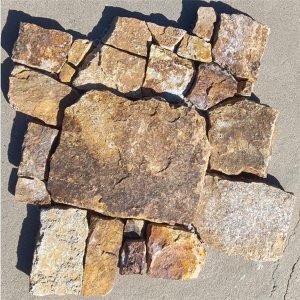Introduction
When it comes to designing or renovating a bathroom or kitchen, the choice of materials for countertops and vanity tops is crucial. Cultured marble and cultured granite are two popular options that offer durability, aesthetics, and affordability. Both materials are engineered surfaces that mimic the look of natural stone but come with their unique characteristics and benefits. In this article, we will delve deep into the world of cultured marble and cultured granite, exploring their differences in terms of composition, appearance, maintenance, cost, and suitability for various applications.
Composition and Manufacturing Process

Cultured marble, also known as engineered marble, is a blend of crushed natural marble stone and high-quality resin. The manufacturing process involves mixing marble dust with resin to create a moldable material that can be poured into molds to form various shapes and sizes. ledge stone for sale are often added to achieve different colors and patterns, making cultured marble a versatile option for interior design projects.
On the other hand, cultured granite is made by combining crushed natural granite stone with resin and pigments. The mixture is then poured into molds and cured to create solid surfaces with the distinctive appearance of granite. Cultured granite offers the beauty of natural stone with enhanced durability and consistency, making it an attractive choice for homeowners and designers.
Appearance and Aesthetics
One of the key differences between cultured marble and cultured granite lies in their appearance and aesthetic qualities. Cultured marble typically features a smooth, glossy finish that resembles natural marble, with veining and patterns that mimic the look of real stone. The color options for cultured marble are vast, ranging from classic whites and creams to bold hues like black and gray, allowing for customization to suit different design preferences.
In contrast, cultured granite offers a more textured and granular appearance that closely resembles natural granite. The rich depth of colors and intricate patterns found in natural granite can be replicated in cultured granite, providing a luxurious and sophisticated look for countertops and vanity tops. The unique flecks and speckles in cultured granite add character and dimension to the surface, creating a striking focal point in any room.
Maintenance and Durability
When it comes to maintenance and durability, both cultured marble and cultured granite have their strengths and weaknesses. Cultured marble is known for its non-porous surface, which makes it resistant to stains, mold, and mildew. However, it is susceptible to scratches, chips, and heat damage, so care must be taken to avoid harsh cleaners and abrasive materials that can mar the surface.
Cultured granite, on the other hand, is more durable and heat-resistant than cultured marble, thanks to the inclusion of natural granite stone in its composition. The dense structure of cultured granite makes it less prone to scratches and impact damage, making it a practical choice for high-traffic areas like kitchens and bathrooms. While both materials are relatively easy to clean and maintain, regular care and proper cleaning techniques are essential to preserve their appearance and longevity.
Cost Comparison
Cost is a significant factor to consider when choosing between cultured marble and cultured granite for countertops and vanity tops. Cultured marble is generally more affordable than cultured granite, making it a budget-friendly option for homeowners looking to achieve the look of natural stone without breaking the bank. The relatively low cost of materials and production for cultured marble translates to savings for consumers, making it an attractive choice for those on a tight budget.
On the other hand, cultured granite tends to be slightly more expensive than cultured marble due to the higher cost of natural granite stone and the manufacturing process involved in creating the material. While cultured granite offers superior durability and a premium aesthetic compared to cultured marble, the higher price point may deter budget-conscious consumers from choosing this option for their home improvement projects. It is essential to weigh the upfront cost against the long-term benefits and aesthetics when deciding between cultured marble and cultured granite.
Suitability for Different Applications
The suitability of cultured marble and cultured granite for various applications is another aspect to consider when selecting a material for countertops and vanity tops. Cultured marble is a versatile option that can be used in bathrooms, kitchens, and other interior spaces where a smooth, elegant surface is desired. Its non-porous nature makes it ideal for wet areas like showers and tub surrounds, as it resists water penetration and moisture damage.
Cultured granite, with its enhanced durability and heat resistance, is well-suited for high-traffic areas like kitchen countertops, where cooking and food preparation activities take place. The textured appearance of cultured granite can hide minor imperfections and wear over time, making it a practical choice for busy households and commercial settings that require a durable and attractive surface. While both materials offer aesthetic appeal and functionality, the specific application and usage requirements should guide the decision-making process.
Conclusion
In conclusion, the choice between cultured marble and cultured granite ultimately comes down to personal preferences, budget considerations, and the intended use of the surface. Cultured marble offers a cost-effective solution with a classic and timeless appearance, while cultured granite provides durability and sophistication reminiscent of natural stone. Whether you opt for the smooth elegance of cultured marble or the textured luxury of cultured granite, both materials have their unique charm and benefits that can enhance the beauty and functionality of your home. By understanding the differences in composition, appearance, maintenance, cost, and suitability for different applications, you can make an informed decision that meets your design goals and lifestyle needs.
